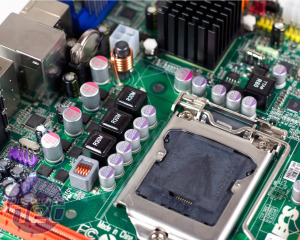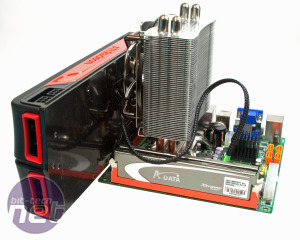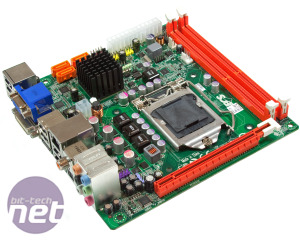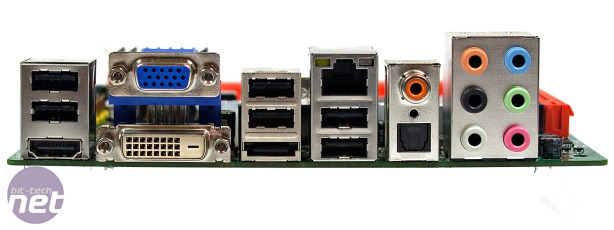Board Layout
As with every mini-ITX board the small size leads to an inevitably difficult build, as the CPU socket ends up being very close to both the memory and 16x PCI-E slot. Particularly large CPU coolers wont fit when you've got a graphics card installed, however given the limitations in power of the board, you don't need a large cooler anyway. The general rule of thumb for small form factor remains the same here: build from the inside, outwards.ECS has tried to make life easier though, with the power sockets, fan connectors, SATA and USB pin-outs close to the edge. The 4-pin EPS 12V CPU power connector is buried near the middle but it's certainly not inaccessible.
The included PCI-E slot features the full 16x lanes of bandwidth, so is suitable for any graphics card as long as your SFF case can fit it. There are 'only' four SATA 3Gbps ports here, compared to the six of the Zotac board, but we'd be seriously surprised to see any mini-ITX case (other than the Fractal Array) able to handle more than four anyway. It's still a step up from the Atom boards that only offer a paltry pair of ports, too. With the H55 chipset there's no option of RAID from Intel, so if you are looking to add some heavy data throughput and/or redundancy in a homebrew server - opt to use the PCI-E slot for a RAID card.
That H55 HSF may look tiny, and we don't deny it got toasty to touch during our testing, but compared to the Zotac and DFI, it's a better design for low airflow setups.
The rear I/O is well rounded, with D-Sub, DVI and HDMI video outputs, as well as six USB 2, one eSATA (from the H55 chipset), RJ45 Gigabit Ethernet, both optical and coaxial S/PDIF out and six 3.5mm stereo audio jacks for the 7.1 surround sound plus microphone and line inputs.

MSI MPG Velox 100R Chassis Review
October 14 2021 | 15:04














Want to comment? Please log in.